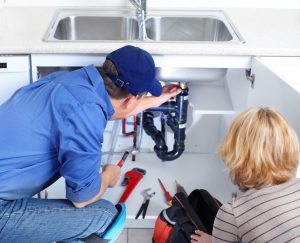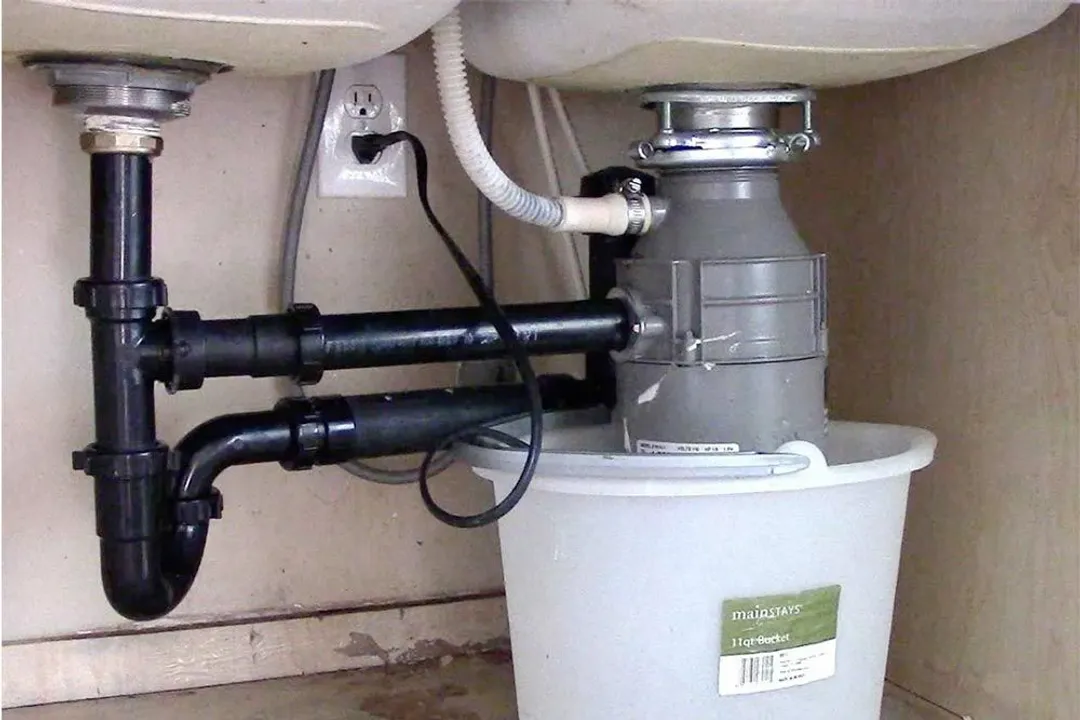Trusted Solutions for Fixing a Dripping Garbage Disposal
Trusted Solutions for Fixing a Dripping Garbage Disposal
Blog Article
Just about everyone maintains their unique theory about How to fix a pretty consistent leak from my garbage disposal.

Waste disposal unit are essential kitchen area appliances that help in getting rid of food waste effectively. However, a dripping garbage disposal can be a frustrating and unpleasant issue to handle. Luckily, lots of leakages can be dealt with conveniently with a couple of straightforward actions. In this write-up, we will certainly go over how to take care of a leaking garbage disposal properly.
Intro
Garbage disposals are set up under kitchen area sinks and are created to shred food waste right into smaller sized items, allowing it to travel through the pipes system easily. While these gadgets are typically trustworthy, leaks can take place gradually because of wear and tear, loosened connections, or damages to the unit.
Usual Root Causes Of Leaks in Garbage Disposals
Worn Seals and Gaskets
Seals and gaskets play a critical function in preventing water from leaking out of the garbage disposal. With time, these components can degrade, resulting in leaks around the disposal system.
Loose Links
The connections between the waste disposal unit and the plumbing system can become loosened gradually, causing water to leakage out throughout procedure.
Splits or Holes in the Disposal Unit
Physical damages to the garbage disposal, such as fractures or openings in the housing, can likewise cause leakages.
Recognizing the Resource of the Leak
Before trying to fix a leaking garbage disposal, it is vital to identify the source of the leakage. This can usually be done through aesthetic assessment or by carrying out straightforward tests.
Visual Evaluation
Inspect the garbage disposal device meticulously for any signs of water leakage. Pay close attention to areas around seals, gaskets, and connection points.
Checking for Leaks
One way to evaluate for leaks is by running water via the disposal unit and checking for any noticeable indications of leak.
Tools and Products Needed for Repairing a Leaking Garbage Disposal
Before starting the repair procedure, collect the needed tools and materials, consisting of a screwdriver, flexible wrench, plumbing technician's putty, replacement seals or gaskets, and epoxy or patching material for fixing splits or openings.
Step-by-Step Overview to Taking Care Of a Leaking Garbage Disposal
Turn Off the Power
Before attempting any kind of repair work, guarantee that the power to the waste disposal unit system is switched off to stop the danger of electrical shock.
Find the Leakage
Determine the precise place of the leakage and identify the reason.
Tighten Links
Use a wrench to tighten any type of loosened connections in between the disposal unit and the pipes system.
Replace Seals or Gaskets
If the leak is because of worn seals or gaskets, get rid of the old elements and change them with new ones.
Patching Fractures or Holes
For splits or openings in the disposal device, use epoxy or an ideal patching material to secure the damaged area.
Evaluating the Garbage Disposal After Fixing
Once the repair service is full, test the garbage disposal by running water with it to make certain that the leakage has actually been settled.
Preventive Upkeep Tips to Avoid Future Leakages
To stop future leakages, it is necessary to carry out regular maintenance on your waste disposal unit. This includes keeping it clean, avoiding putting non-food products or hard items down the disposal, and regularly checking for leaks or various other concerns.
Conclusion
Finally, taking care of a dripping waste disposal unit is a relatively straightforward process that can be completed with fundamental tools and materials. By following the steps outlined in this write-up and exercising preventative upkeep, you can keep your garbage disposal in good working problem and prevent pricey repairs in the future.
HERE’S HOW TO FIX YOUR GARBAGE DISPOSAL
WHAT TO DO IF SOMETHING IS STUCK IN YOUR GARBAGE DISPOSAL
If the impeller won’t turn, there’s probably something stuck in the disposal. It could be a steak bone or peach pit, although plumbers report pulling all sorts of inappropriate objects out of disposals, such as bottle caps or aluminum foil. Make sure power to the disposal is off, and look inside to see if you can see the source of the jam.
Never stick your fingers in a disposal. Pull out anything you see with tongs or pliers.
If the disposal still won’t work, it may be time to call a plumber or consider buying a new disposal. GEM Plumbing & Heating is here for all of your garbage disposal needs.
WHAT TO DO IF YOUR GARBAGE DISPOSAL DRAIN IS CLOGGED
Take everything out from underneath your sink and put a bucket or other container under your disposal to catch any water that drains out. Disconnect your disposal from the power supply. If it’s plugged into a wall outlet, unplug it. If it’s hardwired into an electrical box, go to the electrical panel and turn off the breaker for the disposal. Pour ¼ cup of baking soda into the drain, followed by ½ cup of white vinegar. Give the solution a few minutes to fizz and do its work. Look into the disposal with a flashlight to see if you can see an object that might be causing the clog. If you see it, remove it using tongs or pliers. MORE TIPS ON DEALING WITH A CLOGGED GARBAGE DISPOSAL
Never use drain cleaner in a garbage disposal. It can damage the plastic parts inside the disposal. You can also be splashed with the caustic liquid while working to clear the clog. Beware! Never stick your fingers into a garbage disposal. Trust us — not a good idea. In many instances, your dishwasher drains through your garbage disposal. This allows the disposal to grind any large food particles that may be drained out of your dishwasher. There are some jurisdictions, however, where the plumbing code prohibits such a connection. WHAT TO DO WHEN YOUR DISHWASHER DRAINS THROUGH THE DISPOSAL
Run some water in the sink so your plunger has at least a ½-inch of water to create a seal and plunge vigorously up and down several times. You may need to repeat this several times. Run hot water down the drain to clear any residue that remains.

I was introduced to that article on Why Is through a friend on a different website. Be sure to take the opportunity to promote this blog post if you enjoyed reading it. Many thanks for taking the time to read it.
About Report this page